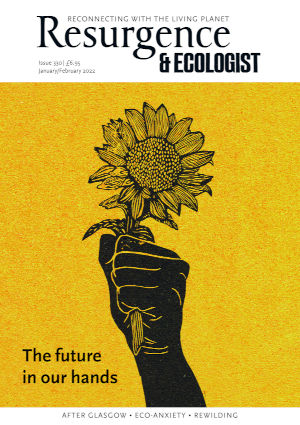Our oceans are in trouble as much as our land. They have suffered centuries of unsustainable abuse and exploitation. They have been plundered for vast quantities of fish, with huge areas of the seabed smashed and stripped of life. Globally, only 13% of oceanic waters are now considered truly wild.
The seas around Britain were once home to the biggest creatures on the planet – including blue, humpback, fin, sperm, bottlenose and sei whales. But the whales were hunted to local near extinction for meat and oil, before commercial whaling in Britain ceased in 1963 (although a worldwide moratorium was not put in place until 1986). Smaller species and precious habitats haven’t escaped our relentless de-wilding. As recently as the mid-1990s, ships were trawling huge volumes of sand eels – a prolific lynchpin of the marine food web – from the North Sea to send to Danish power stations to generate electricity.
The Firth of Forth – once home to a 150km² oyster bed, believed to have been the largest in the world – was raked out in the 19th century and is now devoid of oysters. In an ongoing decline, a huge proportion of seagrass meadows and shellfish beds have vanished over the past century. Although over a third of Scotland’s seas now have some form of protection, damaging activities such as scallop dredging and bottom trawling are banned from less than 5% of coastal waters.
But hope is still there, which is where rewilding comes in. At sea, as on land, rewilding can help us reverse the Nature emergency and fix the climate crisis, while benefiting people. Healthy seabeds drive a richer marine ecology, so when marine habitats recover, so does everything that relies upon them. Healthy seas – especially rich biodiverse habitats such as coastal saltmarshes, kelp forests and seagrass beds – are also vital in the fight against climate breakdown because they sequester vast amounts of carbon.
Marine rewilding can offer fresh opportunities for communities and for creating local Nature-based economies too – including regenerating once-bustling harbours and coastal towns. For these reasons, Rewilding Britain is calling for rewilding and Nature recovery across at least 30% of Britain’s land and seas by 2030.
To make that happen, our politicians need to step up. But meanwhile people aren’t waiting, and increasing numbers of projects are taking action to allow the rich rainbow of underwater habitats – and the vast swirl of sea life – to recover.
From Dornoch Firth to Lyme Bay, inspiring initiatives are leading the way by restoring seagrass meadows and kelp forests. Oyster regeneration projects are under way in Argyll, Essex and the Solent.
Members of Rewilding Britain’s Rewilding Network, which is bringing together large-scale Nature recovery projects from across the country, include RSPB Wallasea Island – a stunning mix of marshland, lagoons, ditches and sea in Essex, restored through a managed realignment project and now a habitat for a wide range of species.
On the Isle of Arran, Lamlash Bay – home to one of Scotland’s largest maerl beds – has pioneered with spectacular results a 2.67km² no-take zone within a wider 280km² no-trawl reserve, thanks to the Community of Arran Seabed Trust (COAST). As detailed in our recent report, ‘Rewilding and the Rural Economy’, COAST also demonstrates how a community can support local jobs and businesses by protecting and restoring Nature.
Such initiatives offer a blueprint for bringing our seas and coasts back to health.







